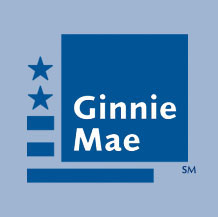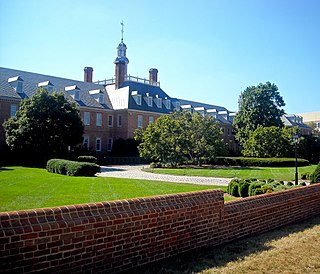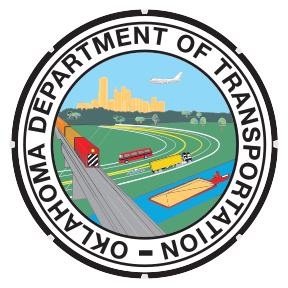
The Department of the Treasury (USDT) is an executive department and the treasury of the United States federal government. Established by an Act of Congress in 1789 to manage government revenue, the Treasury prints all paper currency and mints all coins in circulation through the Bureau of Engraving and Printing and the United States Mint, respectively; collects all federal taxes through the Internal Revenue Service; manages U.S. government debt instruments; licenses and supervises banks and thrift institutions; and advises the legislative and executive branches on matters of fiscal policy.

Public Works Administration (PWA), part of the New Deal of 1933, was a large-scale public works construction agency in the United States headed by Secretary of the Interior Harold L. Ickes. It was created by the National Industrial Recovery Act in June 1933 in response to the Great Depression. It built large-scale public works such as dams, bridges, hospitals, and schools. Its goals were to spend $3.3 billion in the first year, and $6 billion in all, to provide employment, stabilize purchasing power, and help revive the economy. Most of the spending came in two waves in 1933-35, and again in 1938. Originally called the Federal Emergency Administration of Public Works, it was renamed the Public Works Administration in 1935 and shut down in 1944.
The Reconstruction Finance Corporation (RFC) was a government corporation administered by the United States Federal Government between 1932 and 1957 that provided financial support to state and local governments and made loans to banks, railroads, mortgage associations, and other businesses. Its purpose was to boost the country’s confidence and help banks resume daily functions after the start of the Great Depression. The RFC became more prominent under the New Deal and continued to operate through World War II. It was disbanded in 1957, when the US Federal Government concluded that it no longer needed to stimulate lending.
The Federal Housing Administration (FHA) is a United States government agency created in part by the National Housing Act of 1934. The FHA sets standards for construction and underwriting and insures loans made by banks and other private lenders for home building. The goals of this organization are to improve housing standards and conditions, provide an adequate home financing system through insurance of mortgage loans, and to stabilize the mortgage market. The Commissioner of the FHA is Brian Montgomery.

The United States Department of Housing and Urban Development (HUD) is a Cabinet department in the Executive branch of the United States federal government. Although its beginnings were in the House and Home Financing Agency, it was founded as a Cabinet department in 1965, as part of the "Great Society" program of President Lyndon Johnson, to develop and execute policies on housing and metropolises.

The Centers for Medicare & Medicaid Services (CMS), previously known as the Health Care Financing Administration (HCFA), is a federal agency within the United States Department of Health and Human Services (HHS) that administers the Medicare program and works in partnership with state governments to administer Medicaid, the Children's Health Insurance Program (CHIP), and health insurance portability standards. In addition to these programs, CMS has other responsibilities, including the administrative simplification standards from the Health Insurance Portability and Accountability Act of 1996 (HIPAA), quality standards in long-term care facilities through its survey and certification process, clinical laboratory quality standards under the Clinical Laboratory Improvement Amendments, and oversight of HealthCare.gov.

The Government National Mortgage Association (GNMA), or Ginnie Mae, was established in the United States in 1968 to promote home ownership. As a wholly owned government corporation within the Department of Housing and Urban Development (HUD), Ginnie Mae’s mission is to expand affordable housing finance in America by linking domestic and global capitalization to the nation's housing finance markets, providing market liquidity to federally sponsored mortgage lending programs.

The Federal National Mortgage Association (FNMA), commonly known as Fannie Mae, is a United States government-sponsored enterprise (GSE) and, since 1968, a publicly traded company. Founded in 1938 during the Great Depression as part of the New Deal, the corporation's purpose is to expand the secondary mortgage market by securitizing mortgage loans in the form of mortgage-backed securities (MBS), allowing lenders to reinvest their assets into more lending and in effect increasing the number of lenders in the mortgage market by reducing the reliance on locally based savings and loan associations. Its brother organization is the Federal Home Loan Mortgage Corporation (FHLMC), better known as Freddie Mac. As of 2018, Fannie Mae is ranked #21 on the Fortune 500 rankings of the largest United States corporations by total revenue.
The Community Development Block Grant (CDBG), one of the longest-running programs of the U.S. Department of Housing and Urban Development, funds local community development activities with the stated goal of providing affordable housing, anti-poverty programs, and infrastructure development. CDBG, like other block grant programs, differ from categorical grants, made for specific purposes, in that they are subject to less federal oversight and are largely used at the discretion of the state and local governments and their subgrantees.

The Canada Deposit Insurance Corporation is a Canadian federal Crown Corporation created by Parliament in 1967 to provide deposit insurance to depositors in Canadian commercial banks and savings institutions. CDIC insures Canadians' deposits held at Canadian banks up to C$100,000 in case of a bank failure. CDIC automatically insures many types of savings against the failure of a financial institution. However, the bank must be a CDIC member and not all savings are insured. CDIC is also Canada's resolution authority for banks, federally regulated credit unions, trust and loan companies as well as associations governed by the Cooperative Credit Associations Act that take deposits.

Canada Mortgage and Housing Corporation (CMHC) is a Crown Corporation of the Government of Canada. Its superseding agency was established after World War II, to help returning war veterans find housing. It has since expanded its mandate to assist housing for all Canadians. The organization's primary goals are to provide mortgage liquidity, assist in affordable housing development, and provide unbiased research and advice to the Canadian government, and housing industry.
A VA loan is a mortgage loan in the United States guaranteed by the United States Department of Veterans Affairs (VA). The program is for American veterans, military members currently serving in the U.S. military, reservists and select surviving spouses and can be used to purchase single-family homes, condominiums, multi-unit properties, manufactured homes and new construction. The VA does not originate loans, but sets the rules for who may qualify, issues minimum guidelines and requirements under which mortgages may be offered and financially guarantees loans that qualify under the program.

The Oklahoma Department of Transportation (ODOT) is an agency of the government of Oklahoma responsible for the construction and maintenance of the state's transportation infrastructure. Under the leadership of the Oklahoma Secretary of Transportation and ODOT Executive Director, the Department maintains public infrastructure that includes highways and state-owned railroads. Along with the Oklahoma Turnpike Authority, the Department is the primary infrastructure construction and maintenance agency of the State.
The HOME Investment Partnerships Program (HOME) is a type of United States federal assistance provided by the U.S. Department of Housing and Urban Development (HUD) to States in order to provide decent and affordable housing, particularly housing for low- and very low-income Americans. It is the largest Federal block grant to States and local governments designed exclusively to create affordable housing for low-income families, providing approximately US$2 billion each year.
The Chicago Region Environmental and Transportation Efficiency Program (CREATE) is a $3.2 billion project to improve the efficiency of the rail network in the Chicago area by building, amongst other things, flyovers to separate rail traffic on conflicting lines. While the need is fairly clear, finance for the project is stalled in the United States Congress.

XpressWest is a private venture proposal previously backed by Las Vegas, Nevada, hotel developer Marnell to build a privately funded high-speed rail passenger train in the Western United States to connect Palmdale, Los Angeles, and Victorville, California to Las Vegas and later to Phoenix, Arizona, Salt Lake City, Utah, and Denver, Colorado. Marnell's interest in the project was sold to Florida-based passenger rail operator Brightline, which plans to begin construction on the railroad starting in 2019.
Student loans are a form of financial aid used to help students access higher education. Student loan debt in the United States has been growing rapidly since 2006, rising to nearly $1.56 trillion by 2019, roughly 7.5% GDP.
PACE financing is a means of financing energy efficiency upgrades, disaster resiliency improvements, water conservation measures, or renewable energy installations of residential, commercial, and industrial property owners. Depending on state legislation, PACE financing can be used to finance building envelope energy efficiency improvements such as insulation and air sealing, cool roofs, water efficiency products, seismic retrofits, and hurricane preparedness measures. In some states, commercial PACE financing can also fund a portion of new construction projects, as long as the building owner agrees to build the new structure to exceed the local energy code.

Virgin Trains USA, formerly Brightline, is an express inter-city rail system in Florida, United States. The company is a subsidiary of Florida East Coast Industries (FECI), where it initially operated under the name, "All Aboard Florida." It is currently owned and operated by Fortress Investment Group, with Virgin Group providing branding rights and acting as a minority investor. Virgin Trains USA is currently the United States' only privately owned and operated intercity passenger railroad.











